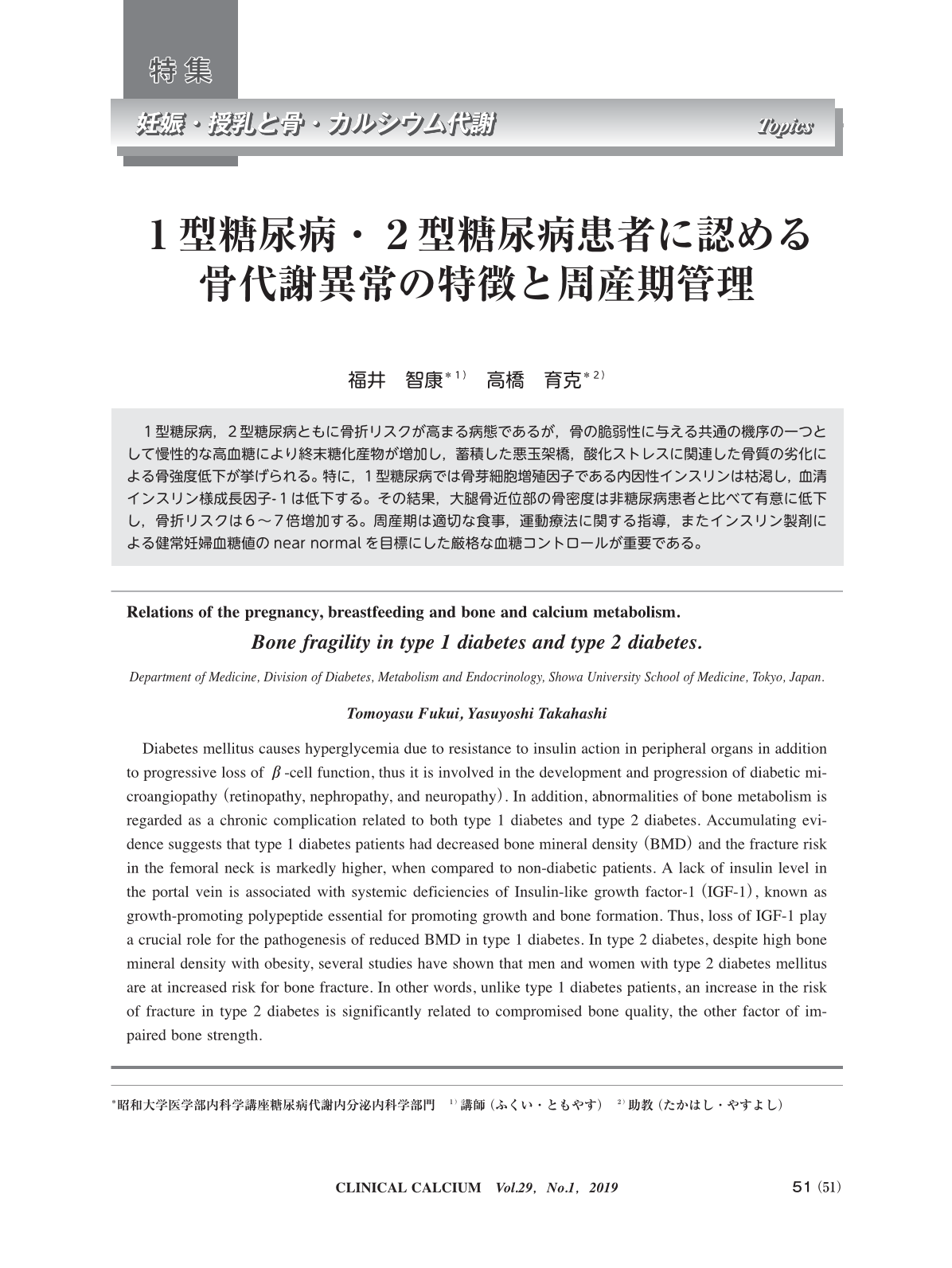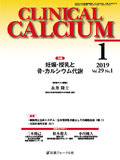Japanese
English
- 有料閲覧
- Abstract 文献概要
- 1ページ目 Look Inside
- 参考文献 Reference
1型糖尿病,2型糖尿病ともに骨折リスクが高まる病態であるが,骨の脆弱性に与える共通の機序の一つとして慢性的な高血糖により終末糖化産物が増加し,蓄積した悪玉架橋,酸化ストレスに関連した骨質の劣化による骨強度低下が挙げられる。特に,1型糖尿病では骨芽細胞増殖因子である内因性インスリンは枯渇し,血清インスリン様成長因子-1は低下する。その結果,大腿骨近位部の骨密度は非糖尿病患者と比べて有意に低下し,骨折リスクは6~7倍増加する。周産期は適切な食事,運動療法に関する指導,またインスリン製剤による健常妊婦血糖値のnear normalを目標にした厳格な血糖コントロールが重要である。
Diabetes mellitus causes hyperglycemia due to resistance to insulin action in peripheral organs in addition to progressive loss of β-cell function, thus it is involved in the development and progression of diabetic microangiopathy(retinopathy, nephropathy, and neuropathy). In addition, abnormalities of bone metabolism is regarded as a chronic complication related to both type 1 diabetes and type 2 diabetes. Accumulating evidence suggests that type 1 diabetes patients had decreased bone mineral density(BMD)and the fracture risk in the femoral neck is markedly higher, when compared to non-diabetic patients. A lack of insulin level in the portal vein is associated with systemic deficiencies of Insulin-like growth factor-1(IGF-1), known as growth-promoting polypeptide essential for promoting growth and bone formation. Thus, loss of IGF-1 play a crucial role for the pathogenesis of reduced BMD in type 1 diabetes. In type 2 diabetes, despite high bone mineral density with obesity, several studies have shown that men and women with type 2 diabetes mellitus are at increased risk for bone fracture. In other words, unlike type 1 diabetes patients, an increase in the risk of fracture in type 2 diabetes is significantly related to compromised bone quality, the other factor of impaired bone strength.



